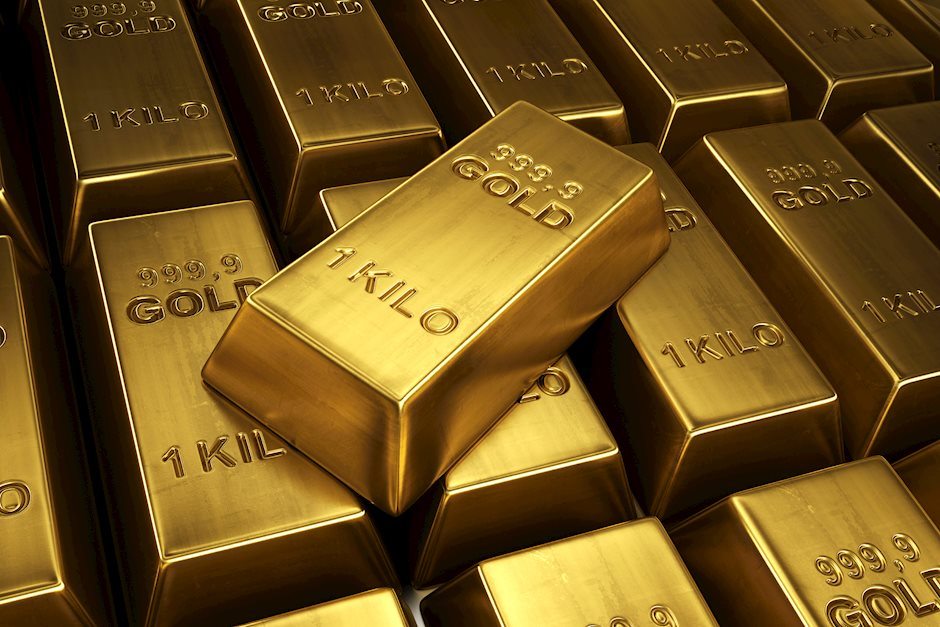Gold holds firms as world braces for financial turmoil, war

As the Federal Reserve puts a hold on interest rates, investors have to ask themselves whether the elevated inflation rate is also on hold.
The Fed’s preferred measure of so-called “core” inflation, which excludes food and energy costs, most recently came in at 3.7%. Despite having fallen substantially since last year’s peak, the official inflation rate has yet to approach the Fed’s 2% target.
The Fed cannot credibly declare victory over inflation. But central bankers also cannot tighten further without risking severe damage to financial markets and the economy.
On Wednesday, the Federal Open Market Committee opted to leave its benchmark funds rate unchanged as expected. However, Fed chairman Jerome Powell left the door open for a potential hike at the central bank’s next policy meeting.
In his remarks, Powell acknowledged that inflation remains a serious threat while insisting that he and his cohorts have everything under control.
Jerome Powell: The Fed´s monetary policy actions are guided by our mandate to promote maximum employment and stable prices for the American people. My colleagues and I are acutely aware that high inflation imposes significant hardship as it erodes purchasing power, especially for those least able to meet the higher costs of essentials like food, housing, and transportation.
We know that if we fail to restore price stability, the risk is that expectations of higher inflation get entrenched in the economy, and we know that that´s really bad for people. Inflation will be both higher and more volatile. That´s a prescription for misery, and so we´re really committed to not letting that happen.
Powell wants to convey to markets that the Fed still has the will to fight inflation with more monetary tightening if necessary.
Not all investors are buying his attempt to keep up appearances. In fact, futures markets are pricing in a strong likelihood that the Fed is finished hiking for this cycle and that its next move will be to cut rates.
But Powell’s posturing was apparently enough to keep gold capped at the $2,000 level.
For the time being, precious metals markets are being overshadowed by financial markets as stocks surge. The S&P 500 is advancing nearly 5% this week on growing hopes that interest rates have peaked. Long- term bond yields are finally dropping, though they remain sharply higher than they were two years ago when Treasuries yielded less than 2%.
Last month, yields across many durations hit their highest levels since 2007. Back then, government debt was 60% of gross domestic product. Today it’s over 100%.
The Treasury Department will issue a staggering $776 billion in debt in the fourth quarter alone. It will have to offer healthy yields in order to attract buyers, especially now that China is scaling down its purchases of Treasuries.
The problem is, the government can’t afford to keep issuing debt at prevailing rates. With a debt to GDP ratio of over 100%, debt servicing costs threaten to suck the life out of the economy and induce even more borrowing.
The Fed could of course slash short-term interest rates and step in with a new bond buying campaign to drive down long-term yields. At the likely cost of sending inflation through the roof.
There will be no return to normalcy. The Fed’s rate hiking campaign may have blunted inflation to some extent, but central bankers are still nowhere near meeting their mandate of “stable prices” – even by their own definition.
Their rate hiking campaign may cause consumers and businesses to tighten their belts, but it is doing nothing to discourage federal deficit spending.
Reckless fiscal policy enabled by monetary policy is amplifying risks to the U.S. dollar’s global standing, its foreign exchange rate, and ultimately its purchasing power.
Meanwhile, retail gold and silver demand has been relatively flat in recent weeks. This is surprising in light of the unfolding war in the Middle East on top of everything else. It will apparently take at least some degree of further escalation before we see frenetic buying again – or new problems in the banking sector or the financial markets in general.
The future is impossible to predict, but owning physical gold and silver has proven time and time again to be a reliable form of financial insurance against uncertainty and turmoil. But it’s a form of insurance that so few Americans have, despite all the remarkable events of recent years.
To receive free commentary and analysis on the gold and silver markets, click here to be added to the Money Metals news service.
Author

Mike Gleason
Money Metals Exchange
Mike Gleason is a Director with Money Metals Exchange, a national precious metals dealer with over 500,000 customers.

















